Are you looking for a specific topic? Use the search function at the top right.
Sind Sie auf der Suche nach einem bestimmten Thema? Nutzen Sie die Suchfunktion oben rechts.
Wenn Sie unser Magazin kostenfrei abonnieren möchten, schicken Sie eine Mail mit dem Betreff FELD und Ihren Kontaktdaten an: feld@zalf.de.
Sie möchten die neuen FELD-Ausgaben lieber online nachlesen?
Dann registrieren Sie sich für den Newsletter auf unserem Online-Blog zum Magazin: www.quer-feld-ein.blog
FELD 01/2020
- Text
- Soil fertility
- Ecosystems
- Innovation
- Technology
- Resource conservation
- Sustainability
- Research
- Food chain
- Food supply
- Fairness
- Rain forest
- Zalf
- Irrigation
- Crop
- Agriculture
- Vietnam
- Maize
- Agricultural
- Soil
Interview THE INSURANCE
Interview THE INSURANCE UNDER OUR FEET Prof. Helming, in your opinion, healthy soils are one of the best kinds of insurance against the impacts of climate change in agriculture. What do you mean by that? Almost half of our soils are made up of pore space. These pores can store water and dissolved nutrients to be available for the plant roots. The better developed the pore space, the longer the time period in which water is available for plant roods during droughts. How is such a well-developed pore space created? What is very important here are soil organisms, for example earthworms, woodlice and springtails. But it is also created by the roots of plants. When these die, they leave pores in which the succeeding roots can now grow much more easily. And what can agriculture do to actively invest in good soil? In designing the rotation of crops in the field, care should be taken to ensure that their root systems complement each other. The roots of cereals, for example, can be more than one meter deep and widely branched. Oilseed rape, on the other hand, has deep taproots. Maize has very shallow roots, so that new pore space only develops in the upper few centimeters of the soil. If I only grow one type of crop, I only ever create pore space in one area of the soil and do not exploit its entire storage potential. Tillage certainly also plays a role? greater potential in smaller and significantly lighter, autonomous machines. These could protect the soil much better in the future, for example by using sensor technology to detect weeds so that extensive plowing is no longer necessary. How can policymakers and consumers support this development? Agriculture must also be able to give the land under our feet a rest and actively invest in the development of climate-resilient soil. However, this is all but impossible given the demand for constantly increasing yields. We must reduce the “pressure to produce” on our soils as a whole. For this, two aspects are required in addition to skillful cultivation methods: a diet with a significantly lower biomass requirement and financial compensation for active soil protection by farmers. If we reduce our meat consumption, consistently avoid food waste and make intelligent use of new technologies, we can develop a more climate-resilient and sustainable form of agriculture that will ultimately help farmers to cope better with extreme weather conditions. It is the task of policymakers to provide financial support for this transition and to set the right framework conditions for consumers, producers, trade as well as transport and recycling logistics. Healthy soils as protection against climate change Of course! Plowing destroys pore spaces and can create a compacted barrier layer at the bottom edge of the plow, making it difficult for water and roots to reach deeper soil areas. Heavy machinery compacts the soil and closes pores, especially when it is wet. GPS-controlled tractors, the automatic adjustment of tire pressure, etc. are already helping here. However, we see PROF. KATHARINA HELMING heads the working group “Impact Assessment of Land Use Changes” at ZALF, is on the Management Board of the BonaRes Centre and holds a professorship for Sustainability Assessment at the Eberswalde University for Sustainable Development (HNEE). 28 29
- Seite 1 und 2: FELD MAGAZINE OF THE LEIBNIZ CENTRE
- Seite 4: TITLE STORY HOW TO MEASURE SUSTAINA
- Seite 8: Rebound effects Rebound effects Pol
- Seite 12: A QUESTION OF FAIRNESS 1 9 15 Intac
- Seite 16: Vietnam Vietnam The team around Las
- Seite 20: Soil Soil FACTS & FIGURES 1 2 3 A w
- Seite 24: Alternative food networks Alternati
- Seite 28: Alternative food networks Alternati
- Seite 34: Field trial Field trial Mobile irri
- Seite 38: The Leibniz Centre for Agricultural
Unangemessen
Laden...
Magazin per E-Mail verschicken
Laden...
Einbetten
Laden...
FELD (dt.)
Neu im querFELDein-Podcast
Would you prefer to read the new FELD issues online?
Then register for the newsletter on our online blog: www.quer-feld-ein.blog

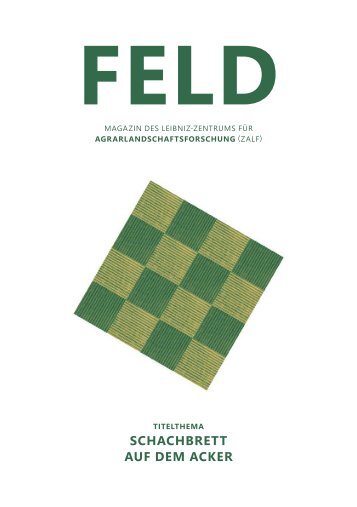
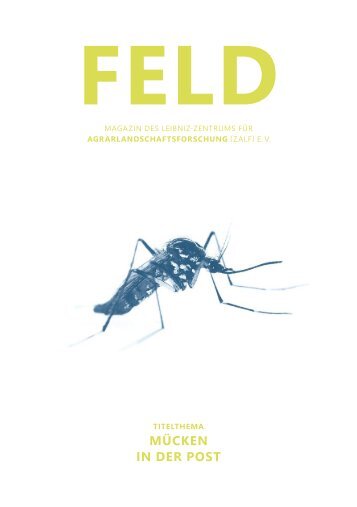

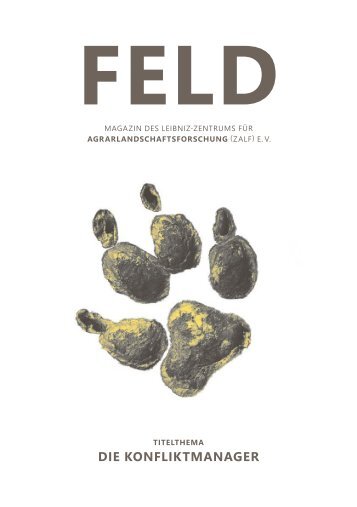
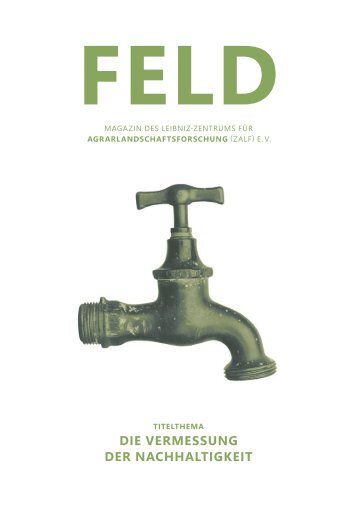
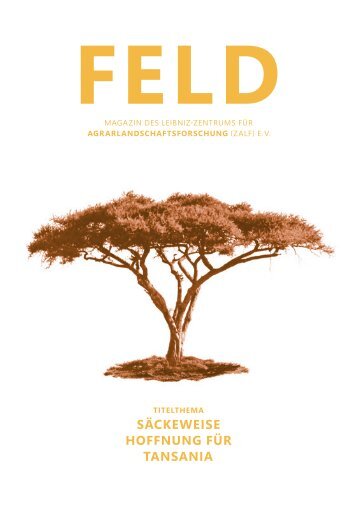
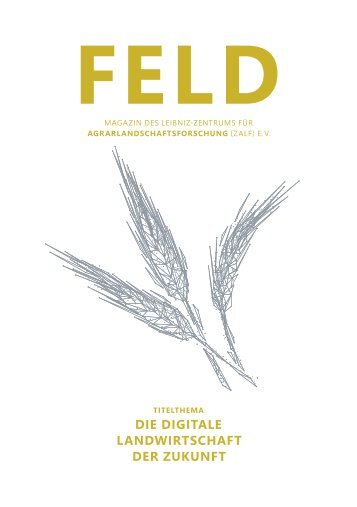
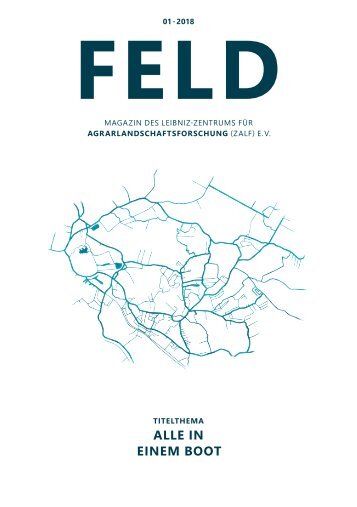
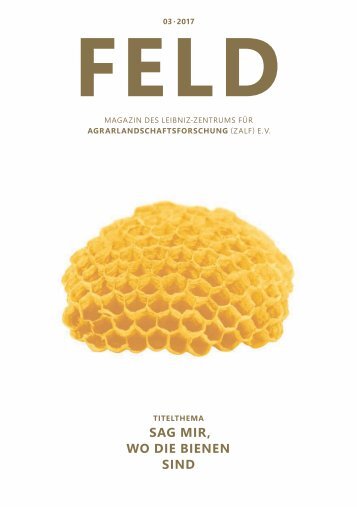
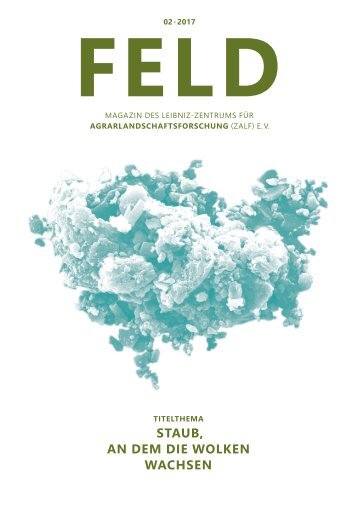

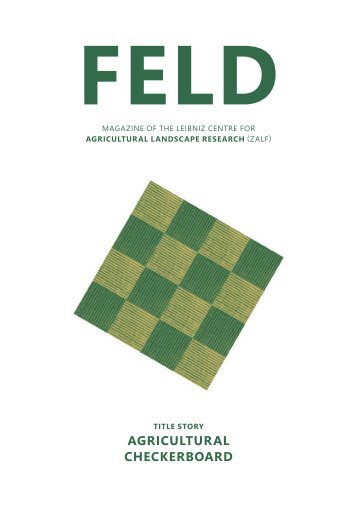

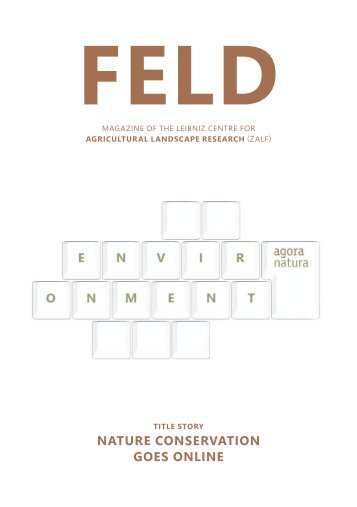








FOLLOW US
Twitter
Youtube
Instagram
LinkedIn